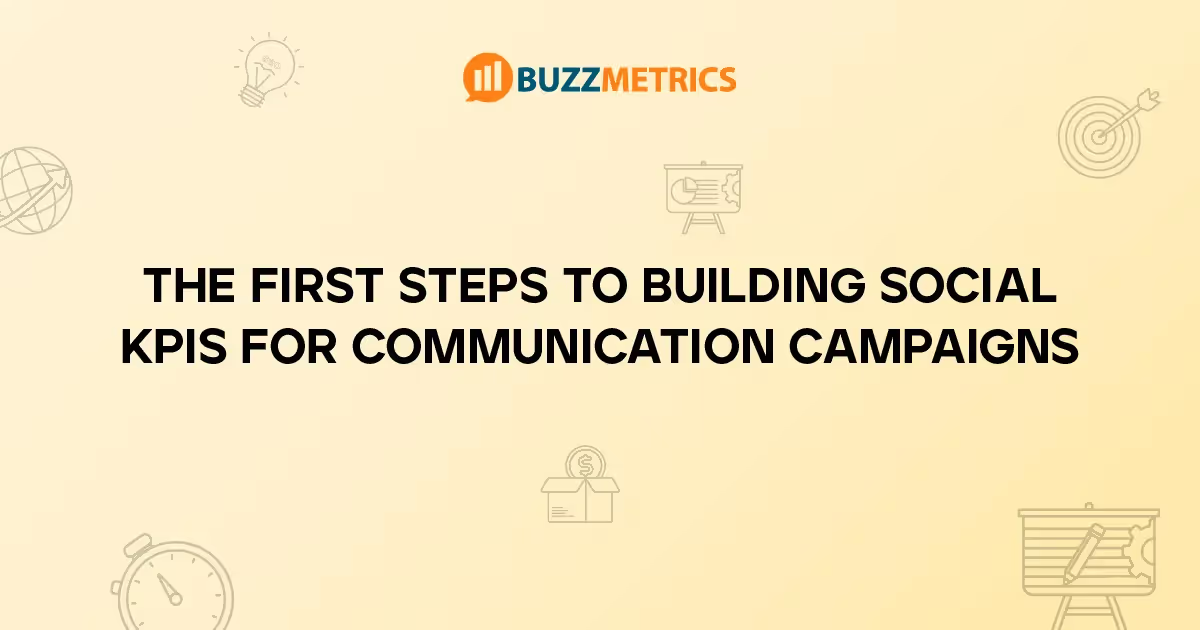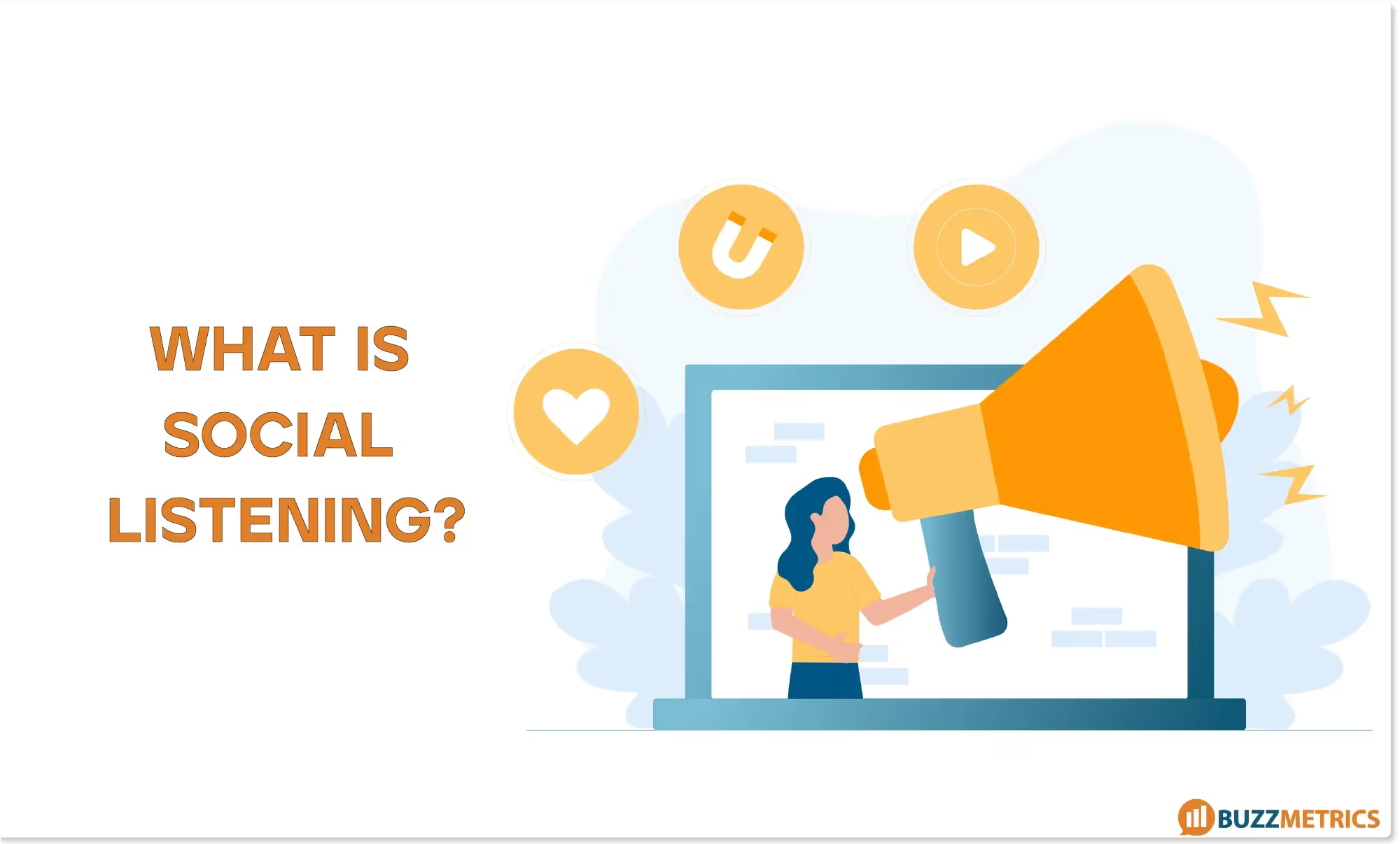A brief introduction to Campaign Tracking metrics

Social Listening is a type of research done by “listening” to discussions on social media. Identifying the right campaign tracking metrics right from the pre-campaign stage is important, as it will help the brand have a clear direction for creative ideas. Moreover, during the implementation of the campaign, the constant monitoring of these indicators helps to adjust, optimize and allocate resources accordingly.
Social Listening is a type of research done by ”listening to discussions on social media. Properly identifying Campaign Tracking metrics right from the pre-campaign stage is important, as it will help brands have a clear direction for creative ideas. What's more, in the course of a campaign, constant monitoring of these metrics helps to adjust, optimize, and allocate resources appropriately. Does the brand have a grasp of the necessary Campaign Tracking metrics & how to combine them for the most accurate assessment? The article below will help to summarize the basic indicators that are commonly used in the social listening reports by BuzzMetrics.
1. Basic indicators to evaluate the creative effectiveness of the social media campaign
There are many indicators to assess the creative effectiveness of the campaign. However, Campaign Tracking metrics can be classified into two large groups: (1) Awareness and (2) Discussion Quality, which correspond to two major questions:
- Are users aware of the campaign?
- How do users react to the campaign?
GROUP 1: AWARENESS
Buzz Volume
Buzz Volume is an indicator of how noisy a topic is. This is the most basic unit of measurement in Social Listening. Every post, comment, or share related to a brand's campaign counts as Buzz. This indicator will help the brand answer the question: How many discussions about the campaign on social media?
For example:Campaign A generated 100 posts, 1,000 shares, and 2,000 comments. So, campaign A collected 3,100 buzz.

Share of Voice
Share of Voice is an indicator that compares the amount of discussion a brand generates compared to its competitors during a campaign run.
Competitors here are campaigns that compete for influence on social networks. With social media, it can be campaigns by other brands in the industry, other campaigns of the same type, or other campaigns running at the same time
This indicator indicates whether the campaign is attracting more attention than the competitors. And this rate depends on the competitor & the number of competitors the brand compares with. SOV is a relative indicator, which depends a lot on who the brand's perspective is looking to compare directly with.
For example:In May 2020, there were 2,000 buzz talking about the B brand. Meanwhile, 8,000 buzz is about other brands in the same industry. So, the Share of Voice of Brand B will be 2000/ (2000+8000) = 20%.
Audience Scale
Audience Scale is an indicator of the number of participants in a public discussion about a research topic (event/campaign/brand). A user can generate a lot of buzz (by sharing a post multiple times). And 1,000 buzz generated by 1,000 people will mean a lot different than 1,000 buzz generated by 100 people. So, this indicator shows the degree of spread of the campaign (virality).
For example: Between November 1, 2019 and January 15, 2020, the New Year campaign “Generali - Song Nhu Y” garnered 31,603 buzz and was discussed by 17,606 people. On average, one person generates 1.8 campaign discussions.
GROUP OF INDICATORS ON THE QUALITY OF DISCUSSION
Sentiment Score
Sentiment Score is an indicator of how users feel about a brand's campaign. This indicator is calculated by the formula: (Positive Discussion - Negative Discussion)/(Positive Discussion+Negative Discussion), whose value is in the range of [-1,1]. Getting closer to 1 means that positive discussion is absolutely overwhelming the amount of negative discussion. Conversely, a low value can be an early sign of a crisis. A Buzzmetrics study shows that 1 negative discussion can be nullified by 4 positive discussions. Therefore, this indicator is recommended to be between 0.58-1.

Brand Mention (Discussions with mention of brand name)
Brand Mention is the amount of discussion that directly refers to the brand name. The metrics indicates a user's interest and remembrance of the brand. Any user comment, whether positive or negative, that mentions the name of the brand is counted as a brand mention. Brand names include official names, Vietnamized names and other variations.
Message Recall (Discussions that refer to the campaign message)
Message Recall is the amount of discussion directly referring to the message of a campaign.
Every social media campaign comes from an idea and is encapsulated in a certain key message. Any user comment that mentions that information counts as a Message Recall.
The indicator helps brands answer the question: Do users recognize the message the brand wants to send?
For example:In Biti's “Go Back” campaign, user discussions containing the keywords “reunion,” “meeting,” “home” count as Message Recall.
Relevant Buzz Volume
Relevant Buzz volume is an indicator of brand-related discussions, which includes Brand Mention and Message Recall.
For example: Still in Biti's “Go Back” campaign, although users do not mention “reunions”, they ask where to buy shoes or how much they cost. These questions count towards the Relevant Buzz Volume.
Attribute Mention
Attribute Mention is the amount of discussion that mentions product or service attributes. This indicator reflects whether the campaign interested users in product attributes.
One of the campaign goals may be to build a brand image. To achieve this goal, brands must build content and lead discussions around brand image attributes.
The indicator helps brands answer the question: Do users recognize or care about the strengths of the product?
Paid, Owned, Earn media
Paid media are channels that are paid to run content. Owned media are channels owned by the brand. Meanwhile, Earned media is an organic channel, when the customer himself becomes the speaker for brand. Earned Media can be viewed as a result of Paid media and Owned media. Each user comment or share is counted towards Earned Media.
Determining the ratio of the three types of media will help brands and agencies to know that with numerical How much discussion can be generated by paid media, the equivalent of knowing how much each discussion will cost the brand. Thus, the brand will evaluate the effectiveness of the communication channels.
For example: There are two media campaigns that together generate 100k buzz. However, campaign A had 67% of discussions generated from earned media, while campaign B had only 32% of discussions generated from earned media. This shows that campaign A uses fewer resources but still has the same impact as campaign B (in terms of discussion volume). In terms of the quality of the discussion, the A campaign is better because of the high level of user discussion.

2. Common Mistakes When Reading Social Listening Reports
As much as possible: “I need to satisfy as many indicators as possible”
These aforementioned indicators had the role of measuring & evaluating the performance of brands/campaigns after a period on social networks. This means that after running the campaign, they measure all Campaign Tracking metrics & assume that “The better these metrics, the better the brand activity implies”.
However, each indicator has its own meaning, responding to a separate marketing goal. And the brand's job is to answer the question “What does my social media marketing campaign need to work for?“. Then, find the right set of KPIs & use it to orient the active sequences
Therefore, instead of trying to do well with every possible indicator, the brand should focus on those that are really important, which are related to the goals of the campaign. This helps to better focus & distribute resources
Further reference:
The Higher the Better: “The Higher the Buzz Volume, the Higher the Sentiment, the Better”
“How much is enough” is the second question that needs to be answered. The KPI must be in line with the discussion situation of the industry & the level of user interest. Too high or too low doesn't help brands properly evaluate their social media efforts.
For this, brands should refer to Buzzmetrics benchmarks.
So, how do I choose the right metrics and identify benchmarks for my campaign?
The choice of campaign tracking indicator depends on many factors, including: the goal and type of campaign, the characteristics of the product industry, the nature of the message. The form of research itself will also affect Campaign Tracking. For example, a new product promotion campaign will pay attention to the indicators that indicate the user's intention to buy, while a community campaign will be interested in the user's support actions (share posts, draw endorsements, etc.)
Often, the questions that are asked to help determine the indicator are:
- What kind of campaign will the brand carry out?
- The goals of the campaign?
- So what indicators are directly related to that goal?
In addition to the indicators of the campaign tracking report, the brand can also refer to the indicators from Ecommerce Auditing reports to look at how effective a campaign reflects on a brand's sales performance on e-commerce sites. Further reference: Video on how to evaluate and measure the creative effectiveness of a social media campaign or Contact Buzzmetrics.
Article Information



















